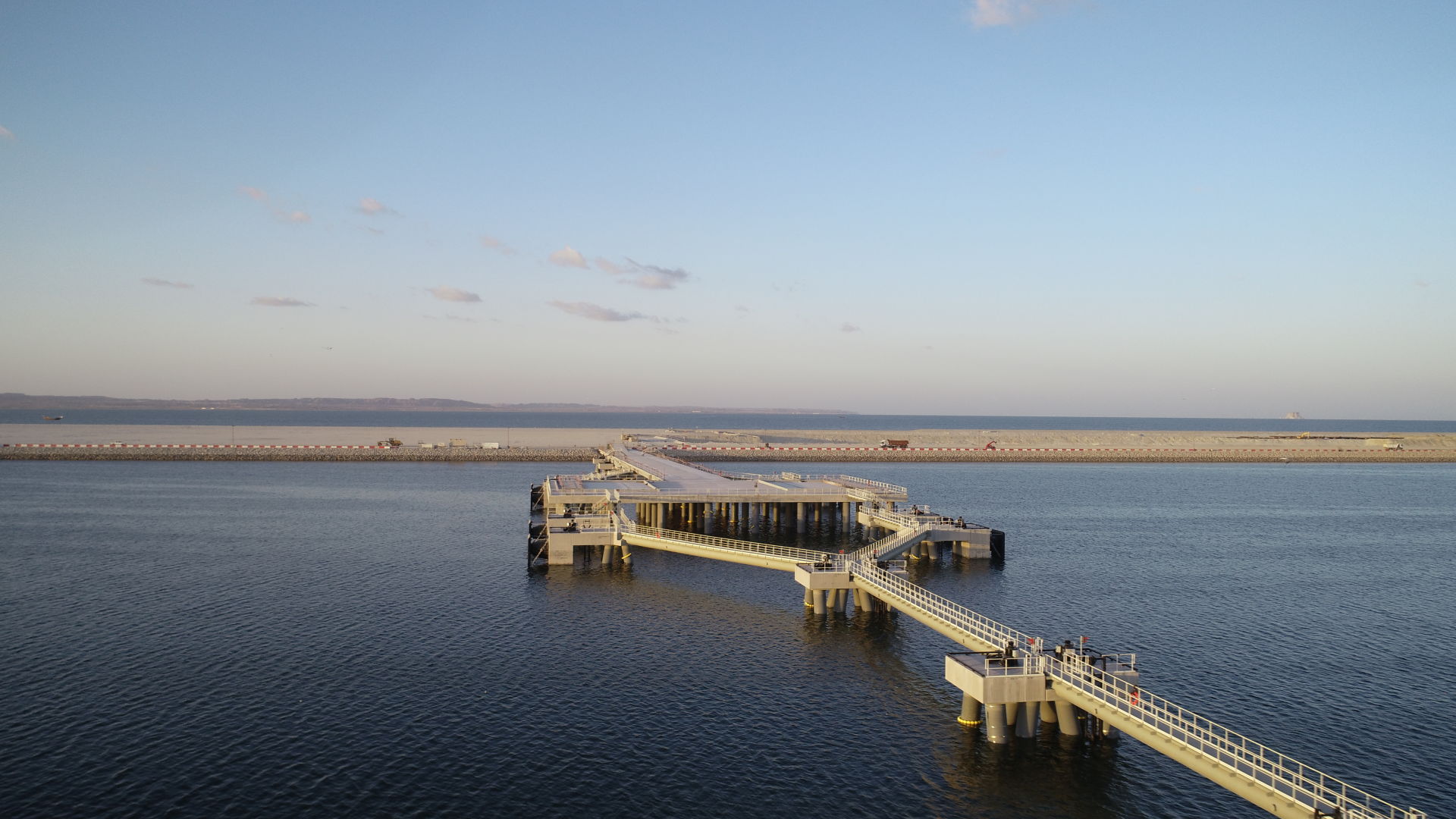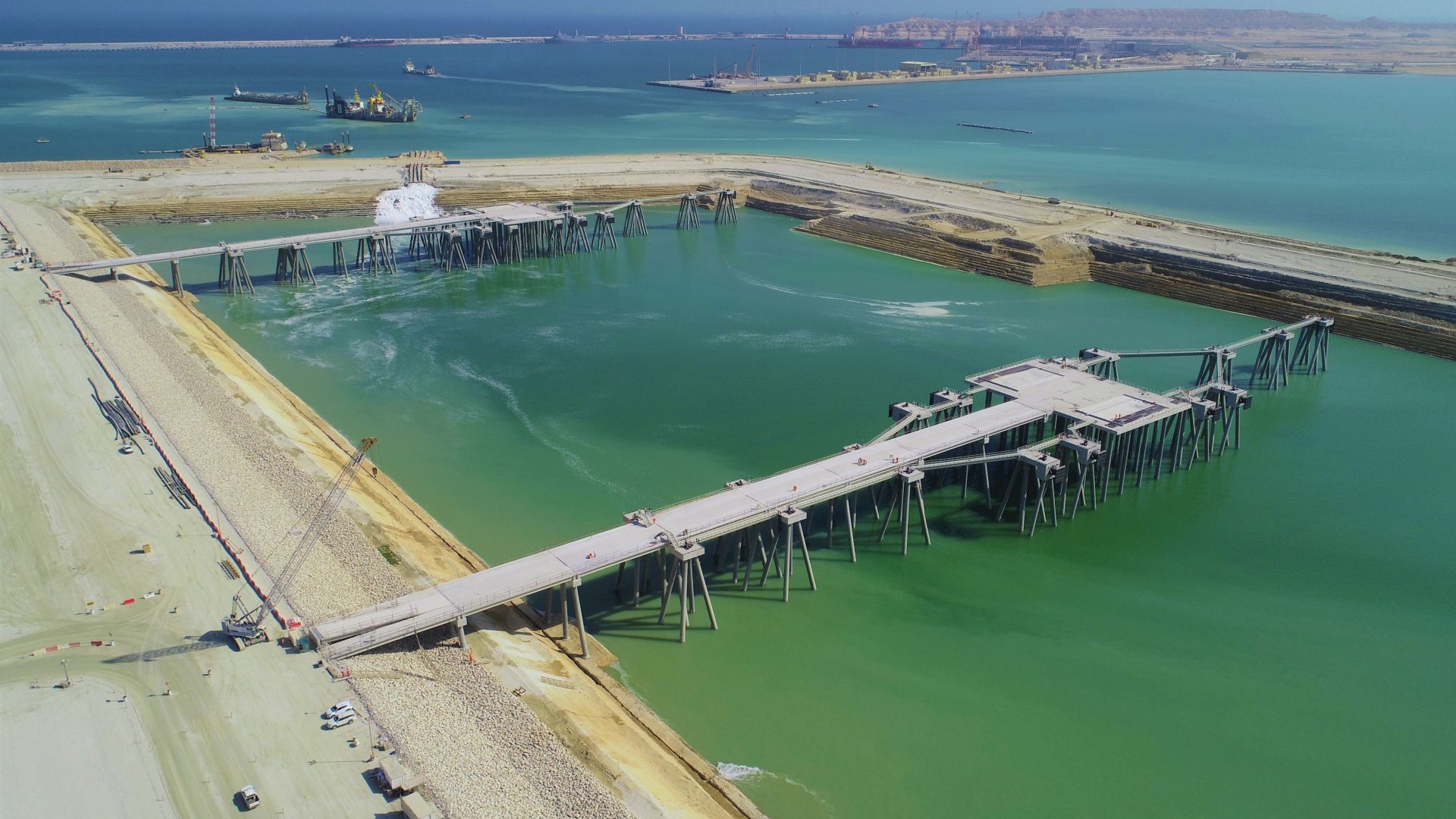
#Overview
The Omani port town of Duqm has seen a significant increase in development over the last decade, and this trend continued with the construction of the Port of Duqm. As part of a consortium with Royal Boskalis Westminster (RBW), BESIX was the main marine civil works subcontractor of this project which has allowed the Port of Duqm to receive and handle giant container vessels.
#Details
Duqm, Oman
Special Economic Zone Authority in Duqm (SEZAD)
$515 million
2017-2019
1 km
Quay wall length
18 m
Quay depth
26M m³
Material dredged from the seabed

#Delivery
Cooperation and preparation prove a roaring success
Collaborative construction
The consortium approach to this project allowed the roles in the Engineering, Procurement & Construction contract to be divided between the two consortium companies. RBW was responsible for the rock cladding, dredging and raising works. BESIX handled the detailed design of maritime structures, as well as the construction of the kilometre-long quay wall and two twin-berth jetties with associated facilities and navigation equipment. A project of this scope requires efficient and effective communication to ensure its success. BESIX and RBW coordinated flawlessly, allowing the project to be delivered in record time.
Meticulous preparation
The remote site location presented significant challenges to every aspect of the project, particularly the procurement of materials and equipment. A comprehensive planning approach, coordinated by both BESIX and RBW, was implemented from the beginning to counteract potential obstacles. This process involved the entire project being executed on paper and computer prior to construction commencing, which largely eliminated the chance of unforeseen complications and was key to the project’s overall success.
Innovative approach
Typically, maritime facilities of this ilk are built from a platform in the water. The BESIX engineering team identified an innovative opportunity that would reduce construction time and improve the overall quality of works. This was to pump all the water out of the area allowing works to take place on a platform 20 metres below sea level, which would later form the permanent seabed. Accomplishing this impressive feat involved sealing off the construction site from the sea by building a retaining wall of reclaimed sand and pumping the site dry. The quay and berths were built using specially designed temporary structures. Once construction was completed, the port was re-flooded over the course of two weeks with a sea level increase of up to two metres per day.
“The BESIX Engineering team proposed a solution to ‘build in the dry’. This made a real difference: we could both limit construction and improve the quality of the permanent structures. With everything visible to the naked eye, precision working was crucial. All in the interest of our client.”
Benoît Vallée, Project Manager, Six Construct

Water Infrastructure
